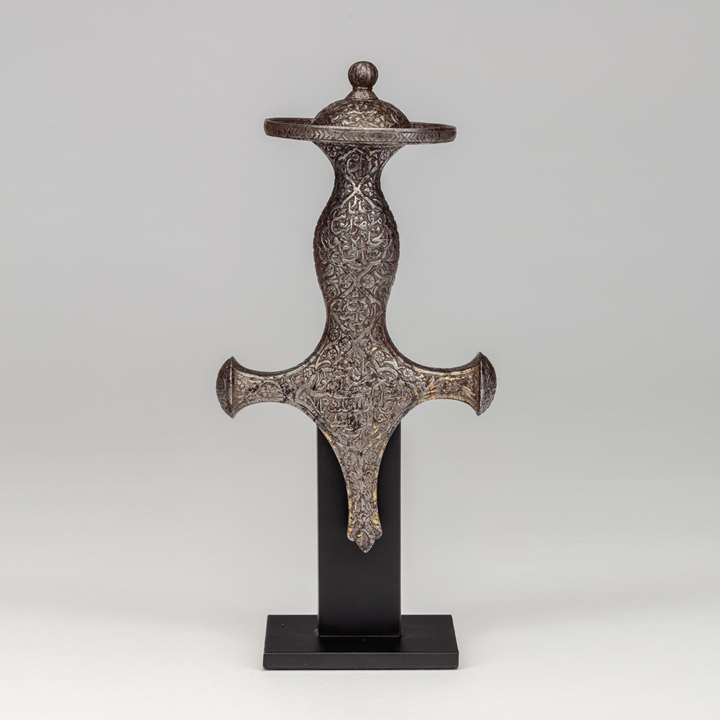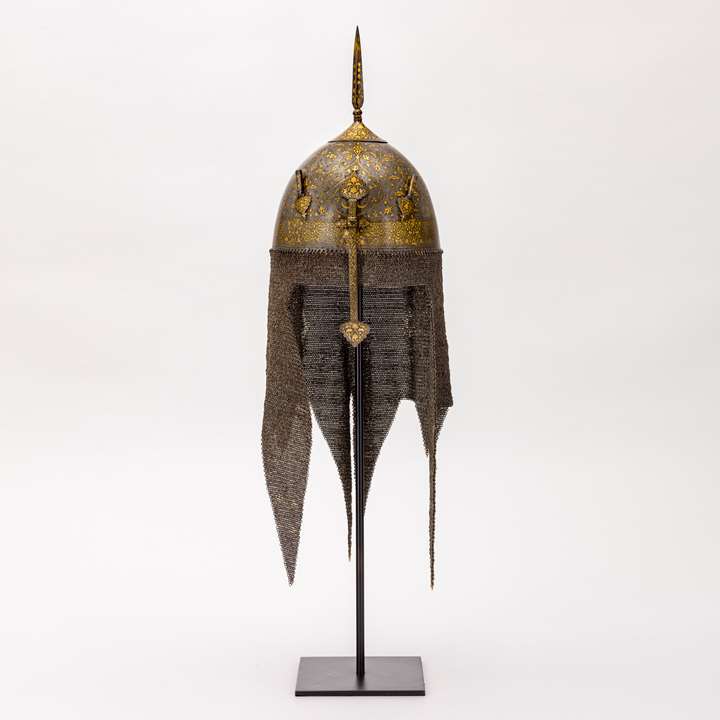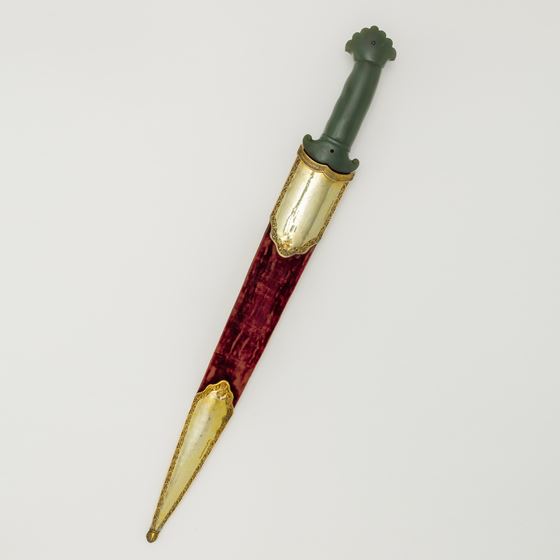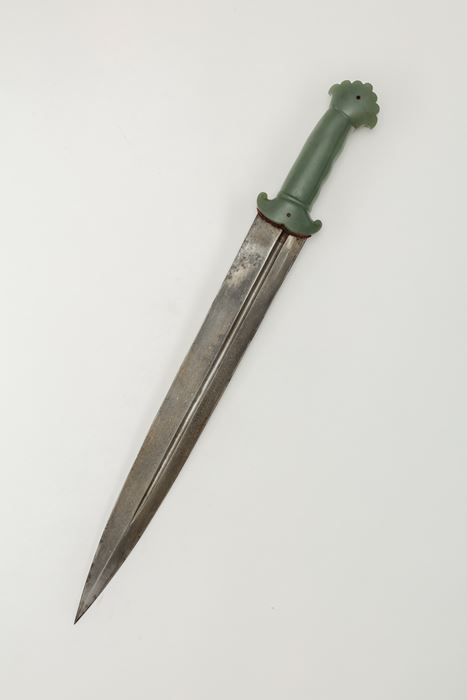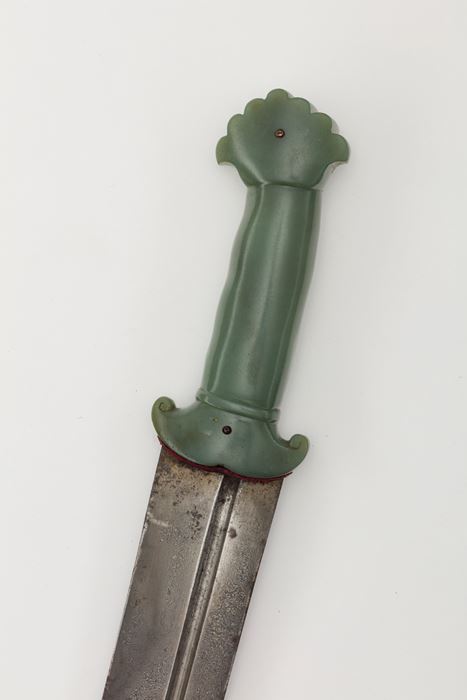Description & Technical information
With a hilt made of green jade that has a narrow bar in the middle and a broader, scalloped pommel, the double-edged blade is made of watered wootz steel and tapers to a sharp point. The blade features a deep ridge running through both sides. The scabbard is covered in red velvet with two gilt silver mounts and ends in a silver bud. The mounts are both decorated with bands of floral decoration and have hallmarks. Distinct sah marks (the zigzag and the word sah) prove the quality of the silver. The other two silver marks on the mounts are likely to be the tügra of Abdulmejid (1839-1861).1 A small semiprecious stone is fixed on the jade hilt.
Turkish kindjals can be identified by their narrow hilts and broad pommels. On kindjals from the first half of the nineteenth century, the scabbard is usually covered with velvet or engraved silver sheet, ending with a small ball like-tip.2 Jade hilts on kindjals are rarely found as they were typically made of ivory or steel.
1 Kürkman, Garo. Ottoman Silver Marks. Istanbul, 1996, pp. 46-47.
2 Rivkin, Kirill. Arms and Armor of Caucasus. First Edition, 2015, p. 247
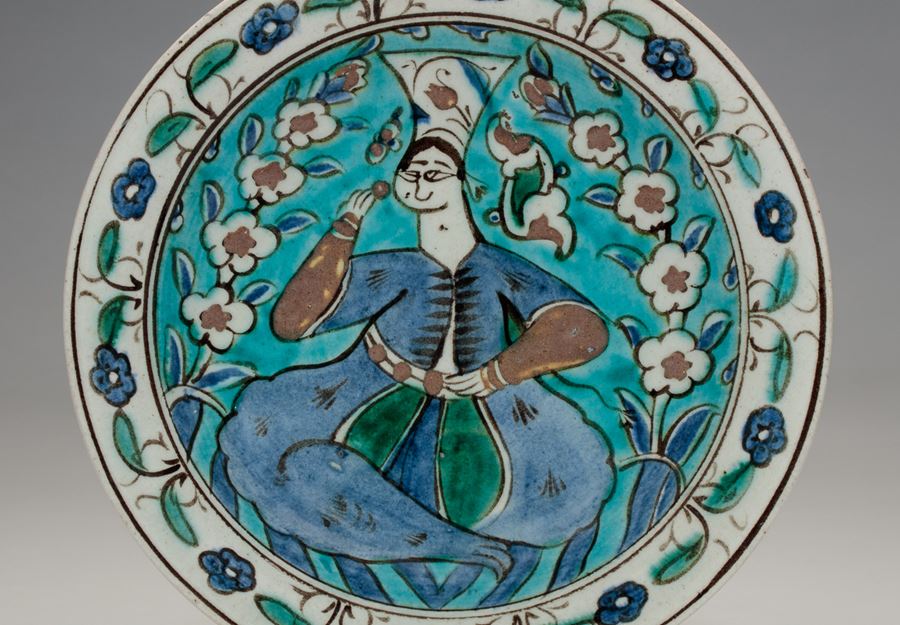
Discover the gallery
Amir Mohtashemi Ltd.
Indian,Islamic and Cross-Cultural Works of Art
More Works From This Gallery
_T638241690217072367.jpg?width=720&height=1200&mode=max&quality=60)
Amir Mohtashemi Ltd.
A Female Yellow-Footed Green Pigeon (Treron phoenicoptera)
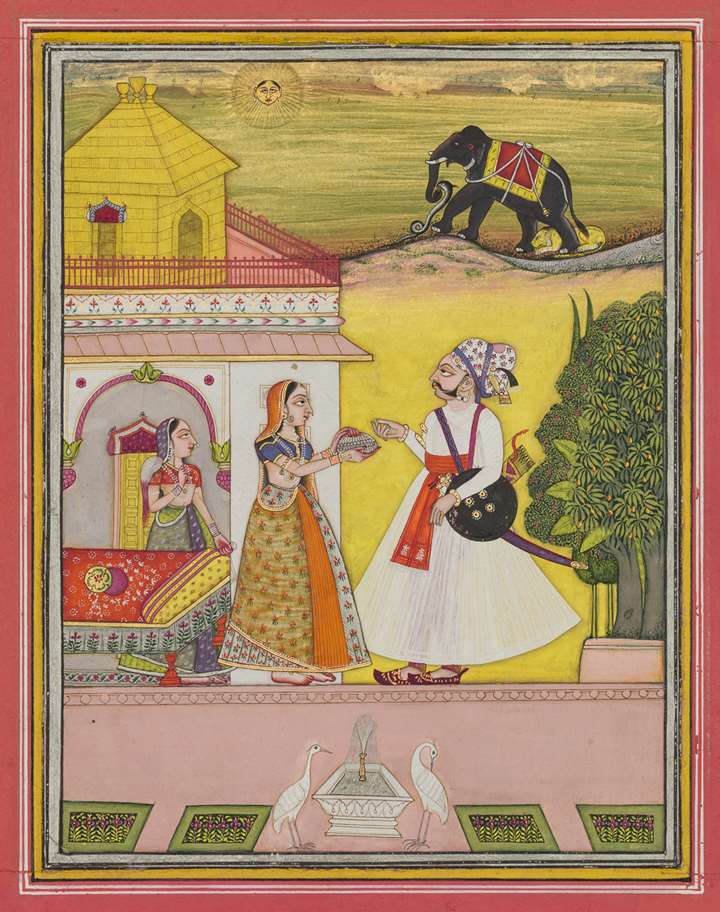
Amir Mohtashemi Ltd.
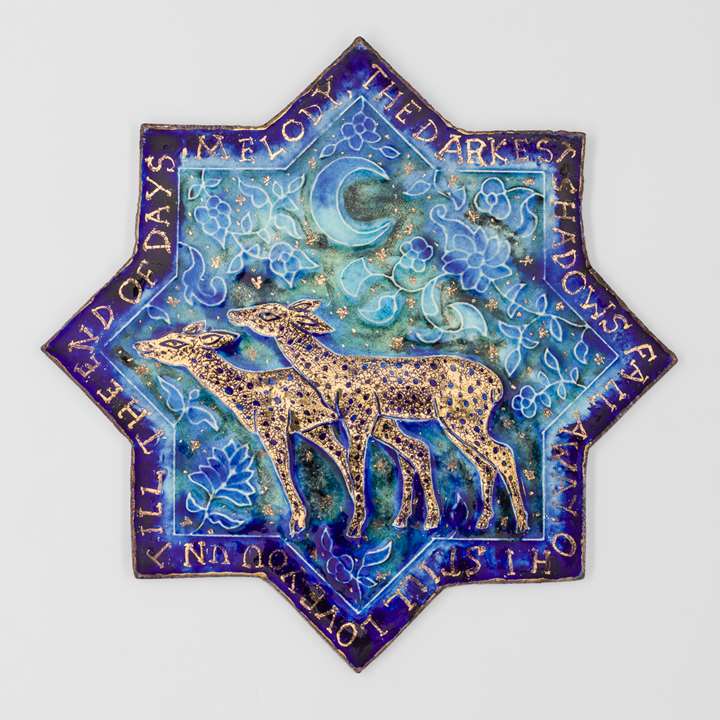
_T638295248852049140.jpg?width=720&height=1200&mode=max&quality=60)
